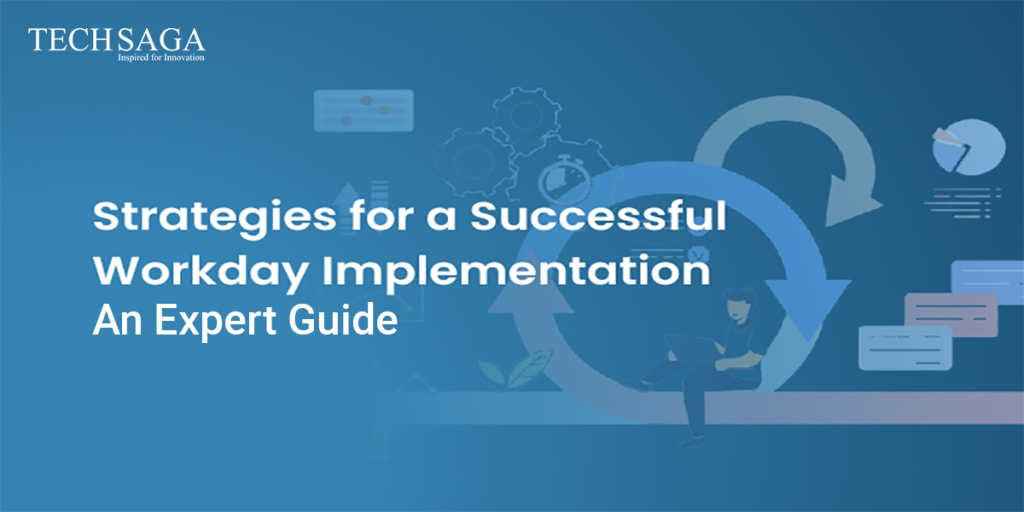Strategies for a Successful Workday Implementation: An Expert Guide
An Expert Guide : Successful Workday Implementation

Implementing a new software system like Workday can be a game-changer for organizations, streamlining processes and enhancing productivity across HR, finance, and other key functions. However, the journey to a successful Workday implementation is often complex and challenging. From selecting the right implementation partners to ensuring user adoption, numerous factors can influence the outcome.
This expert guide aims to provide you with comprehensive strategies to navigate these challenges effectively. So, whether you're an IT manager, a project leader, or an executive sponsor, understanding these strategies will help you achieve a smooth and successful Workday implementation. Eventually, maximizing the return on your investment and transforming your organizational operations. So, let’s get started.
Workday Explained
Workday refers to a cloud-based software suite designed for enterprise applications in human capital management, financial management, and planning. It provides organizations with a unified platform to manage their HR functions, payroll, employee benefits, talent acquisition, and performance management.
Additionally, it supports financial processes such as accounting, procurement, expenses, and revenue management. Moreover, the workday is known for its user-friendly interface, mobile accessibility, and real-time analytics, which enable businesses to streamline operations. Eventually, enhances decision-making, and optimizes resource allocation.
Overall, Workday aims to improve efficiency, agility, and collaboration within organizations through its comprehensive suite of integrated applications.
Features of Workday
With its comprehensive range of cloud-based apps, Workday provides a large number of features. This includes:
1. Human Capital Management (HCM): Manages HR functions such as payroll, benefits, recruiting, talent management, and workforce planning.
2. Financial Management: Supports accounting, procurement, expenses, revenue management, and financial reporting with real-time analytics.
3. Planning, Budgeting, and Forecasting: Enables organizations to create budgets, forecast financials, and plan resources collaboratively.
4. Analytics and Reporting: Provides real-time data analytics and customizable reports to support informed decision-making.
5. Time Tracking and Absence Management: Tracks employee time and manages leave policies and absence requests.
6. Learning Management: Facilitates employee training and development through a centralized platform.
7. Workforce Planning and Analytics: Helps organizations analyze workforce trends and plan for future needs.
8. Mobile Accessibility: Allows employees and managers to access Workday features on the go through mobile devices.
9. Security and Compliance: Ensures data security and compliance with regulations through robust security features.
10. Integration Capabilities: Integrates seamlessly with other enterprise systems to streamline operations and data flow.
Workday Implementation Strategies:
Strategies for successful workday implementation include:-
Define Clear Objectives-
The first step in a successful Workday implementation is to define clear objectives. Understanding what you aim to achieve with Workday will guide the entire process. Whether it’s improving HR processes, enhancing financial reporting, or better data management, having specific goals will keep the project on track.
Assemble a Strong Implementation Team
A successful implementation requires a dedicated team. This team should include project managers, IT specialists, HR professionals, and finance experts. Each member brings unique expertise, ensuring all aspects of the implementation are covered.
Choose the Right Implementation Partner
Selecting the right implementation partner is crucial. Look for workday implementation consultants with a proven track record in Workday implementations. Moreover, they should offer comprehensive support, from planning to post-implementation, ensuring a seamless transition.
Conduct a Thorough Needs Assessment
Conducting a thorough needs assessment helps identify the specific requirements of your organization. This includes understanding current processes, pinpointing areas for improvement, and determining the functionalities needed from Workday. Moreover, a detailed needs assessment ensures that the implementation is tailored to your organization’s unique needs.
Develop a Detailed Implementation Plan
A thorough implementation strategy is necessary to lead the project through to completion. This plan should include important dates, deadlines, needed resources, and risk factors. Also, a well-structured plan ensures that all team members are aligned and that the project stays on schedule.
Data Migration Strategy
An essential component of implementing Workday is data migration. Develop a robust data migration strategy to ensure accurate and secure transfer of data from legacy systems to Workday. This includes data cleansing, mapping, and validation to avoid discrepancies and ensure data integrity.
Training and Change Management
Proper training and change management are vital for a successful Workday implementation. To guarantee that all users are at ease using the new system, provide them with thorough training. Additionally, implement a change management strategy to address any resistance and ensure smooth adoption across the organization.
Testing and Validation
Before going live, conduct thorough testing and validation. This includes system testing, user acceptance testing (UAT), and performance testing. Testing ensures that the system functions as expected and that any issues are identified and resolved before full deployment.
Go-Live and Post-Implementation Support
The implementation process ends with the go-live phase. Ensure that all systems are functioning correctly and that users are fully supported. Post-implementation support is also crucial. Therefore, this includes monitoring the system, addressing any issues, and providing ongoing training and support to users.
Measure Success and Continuous Improvement
After implementation, it’s important to measure the success of the project against the initial objectives. Use key performance indicators (KPIs) to assess the impact of Workday on your organization. Additionally, embrace a culture of continuous improvement by regularly reviewing processes and making necessary adjustments.
Conclusion
Implementing Workday with the assistance of a workday implementation partner can significantly enhance your organization’s efficiency and effectiveness. By following these expert strategies, you can ensure a successful Workday implementation that meets your organization’s needs and drives long-term success. Remember, a clear plan, a dedicated team, thorough training, and continuous improvement are the keys to a smooth and effective Workday deployment.
Embark on your Workday journey with confidence, knowing that with the right strategies in place, success is within reach.
About the Creator
Techsaga Corporations
Techsaga is a leading consulting and development team located in India, USA, UK, and Abu Dhabi. With the help of our past experiences, focussed approach and certified professional we are always keen to take up any challenges.
Enjoyed the story? Support the Creator.
Subscribe for free to receive all their stories in your feed. You could also pledge your support or give them a one-off tip, letting them know you appreciate their work.






Comments
There are no comments for this story
Be the first to respond and start the conversation.